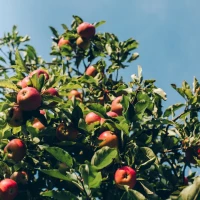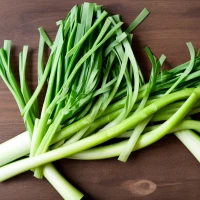Cantaloupes are a refreshing addition to any table, flaunting their sweet, musky flesh that tantalizes the taste buds and seduces the palate. The art of cutting a cantaloupe may seem daunting to some, but with the right technique, it’s as easy as pie. In this article, we’ll guide you through five simple steps to achieve the sweet success of perfectly sliced cantaloupe every time. If you’ve been perplexed by this delectable Cucumis melo, worry no more. Whether you’re prepping a vibrant fruit salad, garnishing a gourmet dish, or simply indulging in a healthy snack, our expert tips will elevate your fruit-cutting game to pro level.
Before we dive into the juicy flesh of cantaloupe cutting, let’s sharpen our understanding of what makes this fruit a favorite. Cantaloupes, also known as mush melons or rockmelons, are part of the diverse gourd family, a cousin within the sphere of squash and vegetables. Their season peaks in the warmer months, offering a cool escape from the heat. A perfectly ripe cantaloupe is an embodiment of summer’s sweetness, and knowing the optimal cutting method will ensure you unlock all its potential.
To master the art of cutting cantaloupe, it’s not only about the knife skills; it’s also essential to start with the right selection and storage. Temperature, texture, and timing are pivotal to ensuring your cantaloupe is ripe for the cutting. Now, let me guide you through the process from selection to the final, succulent slice.
Step 1: Choosing the Right Cantaloupe
The journey to a perfect cantaloupe experience begins with selecting the best fruit. A ripe cantaloupe will exude a sweet, slightly floral scent from the blossom end and yield gently under pressure. Here’s what you need to look for:
- Colour: A golden-hued rind beneath the netted pattern is a tell-tale sign of ripeness.
- Firmness: The cantaloupe should feel firm overall, yet slightly soft at the stem end.
- Aroma: A sweet fragrance should invite you when you sniff the blossom end.
- Netting: A well-defined, raised lattice on the rind is indicative of mature fruit.
Seasonal Considerations
Purchasing cantaloupe in its peak season, usually from June through September in the Northern Hemisphere, will increase your chances of selecting a perfectly ripe melon. However, with advancements in agricultural practices, cantaloupes are now available year-round with varying degrees of sweetness.
Temperature and Ripening
If your cantaloupe isn’t quite ripe yet, leave it at room temperature for several days, checking daily for the subtle softening and enhanced aroma that signify its readiness. Once ripe, cut cantaloupe should be refrigerated to maintain its freshness.
Step 2: Safe and Sanitary Prep
Before you slice into your cantaloupe, proper preparation is crucial for safety and hygiene. Contaminants or bacteria can reside on the rind, and will be carried to the fruit’s flesh by the knife. Follow these best practices:
- Clean the Surface: Wash the cantaloupe under running water and scrub the rind with a clean produce brush.
- Wash Hands and Utensils: Ensure that your hands, cutting board, and knife are thoroughly clean to prevent cross-contamination.
- Dry the Melon: Gently pat the cantaloupe dry with a clean cloth to reduce slipping while cutting.
The Ideal Cutting Surface
A steady, non-slip cutting board is essential—preferably one dedicated to fruits and vegetables to avoid cross-contamination with meat products.
Step 3: The Initial Cut
Now, the moment you’ve been preparing for—the cut. A sharp chef’s knife is your tool of choice, providing control and precision as you slice.
- Stabilize the Melon: Place the cantaloupe on its side on the cutting board.
- Slice the Ends: Cut off both the stem and blossom ends, creating flat surfaces that will secure the melon in place.
- Stand It Up: Position the cantaloupe upright on one flat end.
Mind Your Grip
Always curl your fingers inward, away from the blade, using a claw grip to hold the fruit steadily and protect your digits.
Step 4: Peeling and Segmenting
Peeling with Precision
With your cantaloupe securely upright, you’ll begin the peeling process:
- Vertical Slices: Slide the knife from top to bottom, following the curve of the melon, to remove the rind and outer layer of flesh.
- Inspect and Trim: Inspect the melon for any remaining green strings and trim them off—this part is less sweet and can be bitter.
Segment for Versatility
Now, you can tailor your cantaloupe slices to suit your dish:
- Halves: Slice the peeled cantaloupe down the middle to create two equal halves.
- Seed Removal: Using a spoon, gently scoop out the seeds from each half.
Cubes or Wedges
- Cubes: Lay each half cut-side-down and slice into desired widths, then cross-cut for cubes.
- Wedges: Keep the halves intact and make slices from stem to blossom end.
Step 5: Storing and Serving your Cantaloupe
Short-Term Storage
After cutting, cantaloupe should be covered and stored in the refrigerator if not consumed immediately. It will stay fresh for up to three days.
Long-Term Storage
For longer storage, cubed cantaloupe can be frozen. Spread the cubes in a single layer on a baking sheet, freeze until solid, and then transfer to airtight containers or freezer bags.
Final Touches and Serving Suggestions
Now, let’s get creative with serving! A cut cantaloupe is incredibly versatile:
- In a Fruit Salad: Toss cantaloupe cubes with other seasonal fruits for a refreshing salad.
- As a Snack: Enjoy it simply as a juicy, hydrating snack.
- In Savory Dishes: Pair with prosciutto for a classic Italian appetizer, or add to a green salad for a sweet contrast.
Cantaloupe in Recipes
Cantaloupe’s sweet flavor complements a myriad of recipes:
- Smoothies: Blend with yogurt and honey for a smoothie.
- Desserts: Use in sorbets, ice creams, or fruit tarts.
- Drinks: Puree and strain to make cantaloupe juice or a cocktail mixer.
Cutting cantaloupe may seem like a simple task, but applying these professional techniques can enhance your culinary experience, avoid waste, and ensure that each bite is as delightful as the last. Armed with these five simple steps, you’re now equipped to handle a cantaloupe with grace and skill, paving the way to sweet success in your kitchen endeavors. With practice, you will cut cantaloupe like a true pro, impressing guests and treating yourself to the full spectrum of flavors this extraordinary vegetable has to offer. Enjoy the fruits of your labor with the sensory pleasure of perfectly prepared cantaloupe. After all, life’s too short not to savor every sweet slice.










